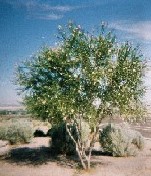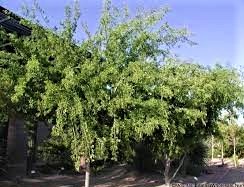Interfaith Forest of Bliss Offers Free Small Trees to Plant
The Interfaith Forest of Bliss tree planting project (a program connected with Interfaith Power and Light) will be ordering small seedlings the beginning of July. They will arrive for planting probably late September. We have chosen two very good varieties for our region for low water, beauty, and wildlife and pollinators. We are taking orders with a commitment to pick up the trees in Albuquerque when they arrive and that they will be cared for and loved.
If you want to order through your faith community or neighborhood please give us the order in one lot.
Please make order by June 30, 2022.
Information required:
Tree type
Number of trees
Name of person
Location
E-mail address
Faith community or neighborhood association
We are trying to keep a record of all trees and locations planted for our records and so far, the project has planted or assisted in planting more than 300 trees. Please contact Ann McCartney asims98891@aol.com
Desert Willow
Mature Height: 25 feet
Water Requirements: Low
Alkalinity Tolerance: high
Elevation: 3000 – 6000
Cold Hardiness: Fair-Good
Color: It has showy white and pink flowers
Suggested Uses: windbreaks, erosion control, screens, and wildlife plantings.
Pest Problems: no major pests
Tree Description: A native shrub or small tree found in washes and along roadsides. This species is tolerant of poor soils and considerable drought. This deciduous plant is classified as a phreatophyte, and is an indicator that water is not too far below the surface during part of the year. The wood is often used for fence posts. It has medium calcium carbonate tolerance and low salinity tolerance. The optimum soil pH is 6.6 to 10.0. It has intermediate shade tolerance. The crown width averages 20 feet.
Netleaf Hackberry
Mature Height: 20 feet
Water: Low-Moderate
Alkalinity: Moderate
Elevations: 2,500-6,600
Cold Hardiness: Good-Excellent
Color: Green
Suggested Uses: erosion control, wildlife, windbreaks
Pest Problems: none
Tree Description: It is a deciduous shrub to small tree with a growth form that varies from single to multiple stems. It has gray, moderately thick bark. It provides cover and food for a variety of wildlife species. Its small orange/red fruits are an important food source for birds during the winter and its leaves and twigs are browsed by bighorn sheep, mule deer, and elk. It is drought tolerant and can be used to aid in soil stabilization on various types of disturbed sites. It commonly grows in washes, ravines, arroyos, rocky canyons and occurs in desert shrubland and semidesert grasslands. It is highly tolerant to calcium carbonate, but has low salt tolerance. The optimum soil pH is 5.9 to 8.3. It is shade intolerant. The crown width is between 20 and 30 feet.


